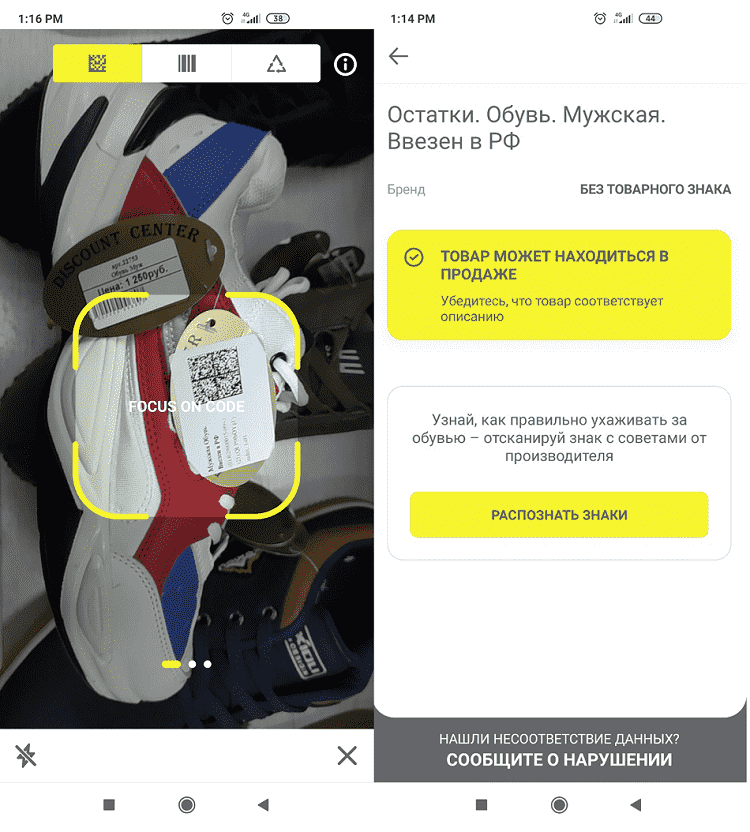Article
Counterfeiters beware! Russia introduces a national system of product labelling
This article was originally published in IAM Media.
In December 2017, Russian President Vladimir Putin approved a plan to create a national system for the digital labelling of goods by 2024. Gowling (International) WLG examines the potential implications of the system in the fight against counterfeit goods and the processes involved; and carried out a test of the new system.
There have been several experimental projects for labelling products in Russia in the past few years. Thanks to these, many products have been designated to fall within categories of goods that have become subject to mandatory registration. By the end of 2020, these groups included tobacco products, cameras, footwear, medicaments, certain textile products, and tires. According to adopted resolutions, as of 2021, the sale of any of these products without a code on the labels is now illegal.
The Centre for Research in Perspective Technologies assigns a unique code (Data Matrix or another type of labelling) to each product for the manufacturer or importer to place on the packaging. The national system for digital labelling and tracking goods is called Honest Mark, which runs as follows:

Source: https://chestnyznak.ru/en/o-chestnom-znake/
According to its developers, the system's main goal is to protect consumers from low-quality and counterfeit products.
It is aimed at product groups that have been most often targeted by counterfeiters. The labelling project affects all participants in the process, from the owners of manufacturing facilities, to importers, distributors, sellers and consumers. Labelled products indicate that a product belongs to a specific manufacturer and the quality of the product conforms to the one claimed.
The Honest Mark smartphone app enables users to check the authenticity and legality of a product. This requires downloading the app and scanning codes. The buyer can also access product information, such as details about the manufacturer, the date and place of manufacture, the shelf life and recommended storage conditions, and a detailed description of the product.
How well does it work? An experiment
The Honest Mark app was tested at the well-known Russian retail chain Смешные цены (Ridiculous Prices), where many counterfeit branded clothes and footwear can be found.

Sample extract taken using the Honest Mark App.
Gowling used the app to scan suspected counterfeit shoes labelled with the trademark of a well-known manufacturer. It stated that the product had no trademark and was available for sale, which is incorrect. The program also allows you to report any discrepancy in the product's information; however, when we selected this option, the app stopped working.
This process for labelling goods raises several concerns. For example, the seller, after registering in the system, is required to enter the product data into the database and then receives the labelling code for each unit of the product. But then the seller can independently label the packaging and place proprietary brand name labels on goods without any control measures.
While the relevance, importance and timeliness of this national labelling system is, of course, justified and welcome beyond doubt, the experiment shows that the system is far from perfect and does not adequately protect the interests of both brands owners and consumers. Not every consumer is savvy enough to distinguish an authentic product from a counterfeit one.
The responsibility for entering the correct information in electronic documents lies with the economic agents. An e-document flow operator is responsible for the permanency and timeliness of the data transfer from the parties to the business processes.
Tobacco
The sale of cigarette packs and cigarettes produced before 1 July 1 2019 without product codes, were permitted for sale until 1 July 2020; while the remainder of tobacco products not having product codes (chewing tobacco, tobacco for hookah, etc) can continue to be sold until 1 July 2021.
Manufacturers are liable for fines from Rb100,000 to Rb150,000 (from $1,400 to $2,100) and the products will be confiscated in the event that tobacco products are not marked with product codes or are marked incorrectly. The sale of unmarked products in this category could lead to fines from Rb50,000 to Rb300,000 (from $700 to $4,100) and confiscation of the goods.
Going forward and other ways of countering counterfeit goods
As Russian news outlet 'Fontanka.ru' reports, customs warehouses may soon be allowed to be built at sea ports (customs checkpoints), where it will be possible to label goods in order to comply with the Honest Mark programme. This will be mandatory for most types of imported goods. Today, such markings are merely applied at manufacturing plants and at specialised sites, which entails additional logistics costs for importers.
The other main methods of deterring counterfeit goods in the domestic market are:
- forwarding a letter of claim before action to the infringer with the requirement to cease the illegal use of intellectual property;
- filing a request to law enforcement agencies to institute administrative or criminal proceedings against an infringer;
- filing a complaint about sale of goods of substandard quality to the Federal Service for the Supervision of Consumer Protection and Welfare; and
- filing a petition to the Antimonopoly Service requesting to qualify an infringer's actions as an act of unfair competition.
NOT LEGAL ADVICE. Information made available on this website in any form is for information purposes only. It is not, and should not be taken as, legal advice. You should not rely on, or take or fail to take any action based upon this information. Never disregard professional legal advice or delay in seeking legal advice because of something you have read on this website. Gowling WLG professionals will be pleased to discuss resolutions to specific legal concerns you may have.

